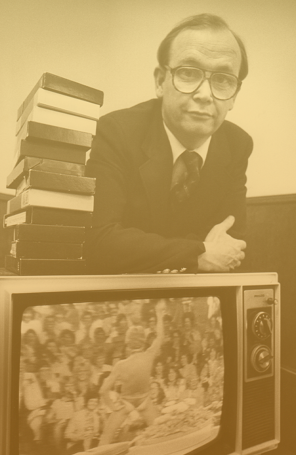From Wishbook to Eternity
Sign up for a six month free
trial of The Stand Magazine!
Twenty-nine years ago, on January 25, 1993, Sears, Roebuck, and Company announced it would no longer be printing their “big book” catalogs, an American institution for 97 years. The new policy was part of a revamping plan designed to hopefully pep up sales, protect jobs, and get the company solvent.
At first, it was probably not an earth-shaking announcement, except for those who worked for Sears. But by November of that year, every kid in America was mourning the loss of Sears catalogs, especially the Christmas Wishbook.
Now, if you are not old enough to understand the importance of that Sears Christmas catalog, then let me tell you. It was THE most important tool for kiddos who were making their wish list for Santa.
American kids understood that as soon as Thanksgiving dinner was done, the catalog was sure to be in the mail. So, boys and girls around the nation waited impatiently for the mailman to bring that big, picture-filled catalog of the newest, brightest toys and games available to mankind.
Truly, the arrival of the Sears catalog marked the beginning of the holiday season. Santa was on his way, and all was well with the world.
As kids, my sister and I would pore over the pages of that catalog, examining each product picture with the finesse of Sherlock Holmes and Watson. Being the elder sister, I got first pick. So, every time we turned a page in the catalog, I would point left or right and cry, “This is my page!” It was the way of the world, so baby sister got left with the spoils.
On and on it went. We would make our list, then change our minds, cross out items, and go back to the catalog to start the process all over again. And of course, we argued and fussed and swapped out items like vicious traders on Wall Street. We could not possibly ask for the same items because the ultimate goal was to get three or four different items each so that we could share (and fuss over) throughout the year.
Finally, after the pages of that catalog were wrinkled and torn, the jig was up. Our parents decreed: it was time! So, we were forced to make our list and write our letters to Santa.
When those envelopes and stamps were licked and our handwritten letters were dropped into our beloved mailman’s bag, the deal was done. No revisions, modification, redoes, or buyers’ remorse. Case closed!
Man, talk about pressure! It was the best of times and the worst of times all rolled into one. But on Christmas morning, all of that toil and worry was over. We loved everything Santa put under our tree.
The good ol’ Sears catalog had done its job once again.
Yesterday, all those memories came flooding back when a product catalog arrived in the mail from Montgomery Ward (MW). It was very reminiscent of an old Sears catalog.
My husband and I were both a bit shocked. We had no idea that MW still existed as a company. We thought they had gone out of business a while back. And we were right – to a degree.
When I researched, I discovered that MW began with a traveling salesman back in 1872, morphed into a mail-order company, and then a retail giant that finally closed its stores in 2001.
Over that 119-year span, MW also had a very colorful history, including some unique restructuring plans and even a government seizure during Roosevelt’s administration due to unending union strikes. (Check it out for yourself some time; it is an interesting read.)
A few years later, in 2004, the familiar brand name and logo were bought by an online and catalog retail company. Then, MW changed hands again in 2008 and is now part of Colony Brands, Incorporated, which was the source of my catalog yesterday.
After I looked at the catalog a bit, I started thinking and remembering. And after all my musing, I had one final, epic thought; If Sears had only held out for a few more years, they could have used the internet technology to sustain their company, just like MW.
In fact, as soon as the internet was birthed in 1983, people started selling stuff – used computers to be exact. By 1994, the first real sales transaction occurred on a website called NetMarket. That was the same year that Jeff Bezos incorporated Amazon – and look how their story is playing out now.
I was also reminded of several fuzzy, warm memes we all see and smirk about, things like, “When you come to the end of your rope, tie a knot in it and hang on.”
Even a Bible verse came to my mind, “Therefore, my beloved brothers, be steadfast, immovable, always abounding in the work of the Lord, knowing that in the Lord your labor is not in vain” (1 Corinthians 15:58).
But the truth is, Sears catalogs are gone. Our kids will never know the joy of scouring those pages with wide eyes and wonder. But life goes on, and, no worries, Jeff Bezos has it under control. Amazon now has an online and in-mail version of our beloved Christmas Wishbook, called “Ready, Set, Play.”
But when your kids or grandkids get a copy, please make sure to sit down and peruse the pages with them. And take the time to tell them a story about the Sears catalog because it really is ancient history that they need to know.
Finally, remind them that God really does turn obstacles into opportunities and tragedies into triumphs – if we simply hold tight to His hand.

Sign up for a free six-month trial of
The Stand Magazine!
Sign up for free to receive notable blogs delivered to your email weekly.



















